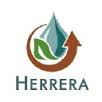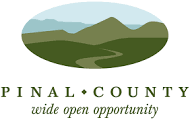News
$1.1 Million in Grants Awarded to Improve the Health of Long Island Sound Sixteen grants awarded to projects in New York
Dec 07, 2020
NEW YORK (December 7, 2020) – Today, top federal and state environmental officials announced 16 grants totaling $1.1 million to local governments, non-governmental organizations and community groups to improve Long Island Sound. The grants are matched by $2.3 million from the grantees resulting in $3.4 million in funding for conservation around the Long Island Sound watershed of New York.
Work funded through the Long Island Sound Futures Fund (LISFF) has shown how projects led by local groups and communities make a difference in improving water quality and restoring habitat around the Long Island Sound watershed. The grant program combines funds from the U.S. Environmental Protection Agency (EPA), the U.S. Fish and Wildlife Service (FWS) and the National Fish and Wildlife Foundation (NFWF).
“EPA is proud to engage local, state and federal partners to seek out and implement innovative ways to restore and protect the Long Island Sound,” said EPA Region 2 Regional Administrator Pete Lopez. “We have the opportunity to continue supporting and building on the hard-earned success in restoring the Long Island Sound over these past years. From reducing nitrogen going into the Sound, restoring nearly 1,625 acres of habitat and reopening 317 miles of river habitat to fish, our collaborative progress is ongoing. Prospects of increased green infrastructure, improved water quality and engaging educational programs assure long-lasting and sustainable use for generations to come.”
The LISFF 2020 grants will reach more than 670,000 residents through environmental education programs and conservation projects. Water quality improvement projects will treat 5.4 million gallons of stormwater, install 23,000-square-feet of green infrastructure and prevent 3,000 pounds of nitrogen from entering Long Island Sound. The projects will also open 3.7 river miles and restore 108 acres of coastal habitat for fish and wildlife.
"The Long Island Sound is one of our most important natural treasures, which is why we must do everything possible to protect and preserve it,” said Senator Kirsten Gillibrand, a member of the Senate Environment and Public Works Committee. “I want to congratulate all the grant recipients whose vital work through the Long Island Sound Futures Fund will help protect the long-term health of the Sound and its surrounding communities. I was proud to sponsor legislation in the Senate that reauthorized the EPA’s Long Island Sound programs to ensure this funding continues, and will continue to work with my colleagues to uplift and expand the positive impact everyone’s participation in this critical effort will have on the Sound for generations to come.”
Representative Rosa DeLauro, Co-chair of the Long Island Sound Caucus, added: “The Long Island Sound is one of our most treasured natural resources, and it is vital that we continue to support programs and services that maintain its health and vitality. Having grown up on its shores, the Sound has always held a special place with me, and I am so proud to have the opportunity to work to ensure that its beaches and waters remain places for children and families to enjoy. We have made extraordinary strides, but issues with sewer overflows, stormwater runoff, and other climate change issues challenge us to do more – and so we will. As one of the Long Island Sound Caucus leaders, and the incoming Chair of the House Appropriations Committee, which is the committee that has jurisdiction over all discretionary funding, I am thrilled to have helped provide this funding for a revitalized Long Island Sound. I remain committed to working with NFWF and EPA and with my Congressional colleagues, and the many Long Island Sound advocates here today doing this critical conservation work.”
"The Long Island Sound is a regional and national treasure, as well as a critical economic, recreational and environmental resource. The $3.8 million investment in these 38 programs throughout the Long Island Sound Watershed will allow us to continue to improve the health and vitality of the Sound,” said Representative Lee Zeldin, Co-Chair of the Long Island Sound Caucus. “These community projects will make a real difference in continuing our progress towards cleaning up Long Island Sound. The partnerships funded by today’s grants show our commitment to the health of the Sound and to ensuring that our children and grandchildren can enjoy it for generations to come."
“In the last 15 years, we have made incredible strides reducing nitrogen loads, restoring habitat, improving water quality, and involving and educating the public about the Long Island Sound. That progress is a direct result of smart investments and an all hands-on deck approach from stakeholders. This $3.8 million investment shows we are committed to protecting the future health and waterways of the Long Island Sound,” said Representative Thomas Suozzi, Co-Chair of the Long Island Sound Caucus. “The Long Island Sound is our ‘National Park.’ I grew up swimming and fishing here, and I've raised my children in and around the bays and harbors of the Long Island Sound. Preserving and protecting our most precious resource has, and always will be, a priority of mine. As Co-chair of the Long Island Sound Caucus, I have helped increase funding for the Long Island Sound by 500% since I have been in Congress and I will keep fighting to protect the Sound and all its beauty.”
“Estuaries and their surrounding lands and waters represent some of the most productive ecosystems in the world,” said Jeff Trandahl, executive director and CEO of NFWF. “Through 15 years of grant-making, the Long Island Sound Futures Fund has supported projects to improve the Sound by fostering environmental stewardship and public awareness and education, restoring habitat for fish and wildlife, preventing pollution, and enhancing the resilience of coastal communities.”
The Long Island Sound Study initiated the LISFF in 2005 through the EPA’s Long Island Sound Office and NFWF. Prior to this year’s grants the LISFF invested $23 million in 450 projects. The program has generated an additional $40 million in grantee match, for a total conservation impact of $63 million for regional and local projects. The projects have added 105 river miles for fish passage, restored 773 acres of critical fish and wildlife habitat, treated 200 million gallons of pollution, and educated and engaged 3 million people in protection and restoration of the Sound. For more information about LISFF accomplishments follow the link to Long Island Sound 15 Years of Conservation Success.
"Investing in our coastal marshes pays off -- they protect property and infrastructure from flooding, provide clean water, and support fishery, recreation and tourism industries," said Sharon Marino, U.S. Fish and Wildlife Service North Atlantic-Appalachian assistant regional director. "We're pleased to contribute funding to projects this year that will also help the saltmarsh sparrow, a bird whose drastic declines demand urgent efforts to save our salt marshes. Together, we can begin to turn the tide for this species and others."
New York State Department of Environmental Conservation Commissioner Basil Seggos said, "The Long Island Sound Futures Fund supports strategic projects identified by local communities and organizations dedicated to promoting the protection of the sound’s waters and the diverse ecosystems it supports. These grants complement New York State’s and Governor Andrew Cuomo’s comprehensive agenda to improve water quality across Long Island through innovative initiatives and significant investments to reduce and remove excessive levels of nitrogen from the Sound to replenish oxygen, restore fisheries, and repair tidal marshes that will strengthen coastal protections and bolster resiliency. DEC is proud to partner with our state, federal, and local partners to preserve and protect Long Island Sound’s incredible natural resources and unique habitats.”
Long Island Sound is an estuary that provides economic and recreational benefits to millions of people while also providing habitat for more than 1,200 invertebrates, 170 species of fish and dozens of species of migratory birds.
The grant projects contribute to a healthier Long Island Sound for everyone, from nearby area residents to those at the furthest reaches of the Sound. All 9 million people who live, work and play in the watershed impacting the Sound can benefit from and help build on the progress that has already been made.
About the National Fish and Wildlife Foundation
Chartered by Congress in 1984, the National Fish and Wildlife Foundation (NFWF) protects and restores the nation’s fish, wildlife, plants and habitats. Working with federal, corporate and individual partners, NFWF has funded more than 5,000 organizations and generated a total conservation impact of $6.1 billion. Learn more at www.nfwf.org.
About the Long Island Sound Study
The Long Island Sound Study, developed under the EPA’s National Estuary Program, is a cooperative effort between the EPA and the states of Connecticut and New York to protect and restore the Sound and its ecosystem. To learn more about the Long Island Sound Study, visit www.longislandsoundstudy.net









































































































